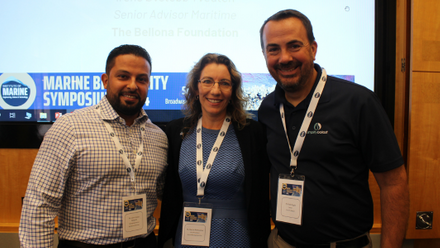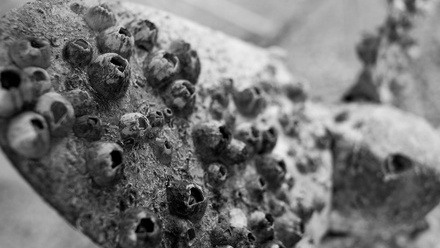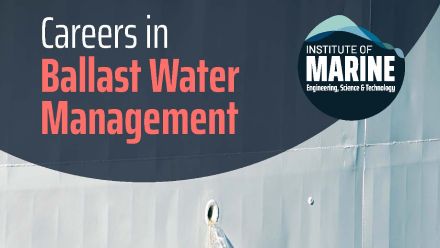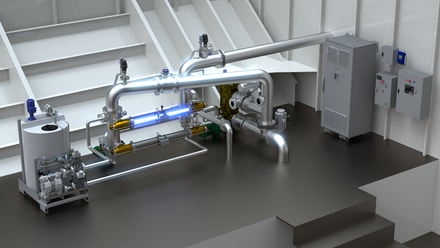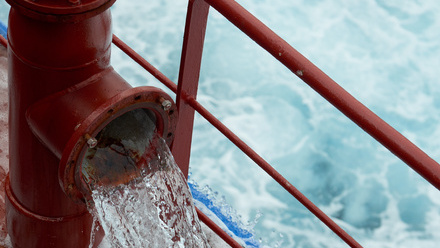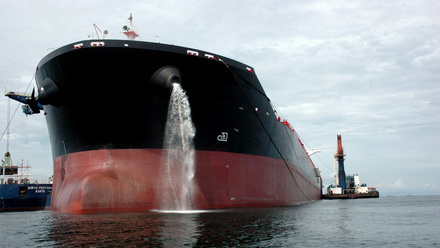Cleaner, greener ballast water
HMS Tamar and HMS Spey are two of the many vessels using UV light to combat the risk of invasive species in ballast water.
British Naval sisterships HMS Tamar and HMS Spey are on a five-year mission to the Asia-Pacific, the first permanent Royal Navy presence in the region since Hong Kong was returned to China. Onboard are the latest cutting-edge green technologies including a catalytic reduction system that reduces emissions of nitrogen oxide, the breakdown of waste water to clean water and UV light to sanitise ballast water and ensure invasive species are not carried around in their tanks. Heralded by the Royal Navy as the “greenest since the days of sail”, the patrol boats comply with the strictest of environmental legislation.
Chemical-free
The Royal Navy isn’t acting in isolation. More navies including the Canadian and Danish fleet are actively addressing the risks posed by ballast water. DESMI Ocean Guard has supplied ballast water management systems (BWMS) to both and chief executive Rasmus Folsø emphasises that the UV treatment of ballast water, being chemical-free, is safe for the crew, the vessel and the environment.
“Crews don’t have to handle dangerous chemicals,” says Folsø, adding that “there are no risks related to explosions or increased corrosion on the vessel. The discharged ballast water is free from chemical by-products and, furthermore, there is no risk of dangerous chemical spills into the ocean,” adding that although he supplies navies, more than 99% of his business comes from BWMS onboard commercial vessels.

DESMI Ocean Guard chief executive Rasmus Folsø
EnviroManagement’s vice-president Marcie Merksamer FIMarEST describes the UV process as “one of the longest-standing and widely-verified” ballast water treatment methods. “Similar to other applications of UV treatment for water disinfection, wavelengths of UV light are passed through ballast water to inactivate organisms,” says the US-based environmental biologist who chairs the IMarEST’s ballast water management Special Interest Group. Currently-available UV treatment systems used for ballast water treatment also incorporate a filtration stage prior to applying UV light, Merksamer adds, which facilitates treatment effectiveness to meet the ballast water discharge standards.
More navies going green
Merksamer believes that interest in the process is growing within other navies around the world. “UV treatment technology is a very viable treatment option for many vessel types, and there are many UV treatment systems currently in use,” says Merksamer, explaining that UV technology to treat ballast water is being evaluated by the US Navy, and she understands that India has also previously considered UV technology.
EnviroManagement’s vice-president Marcie Merksamer FIMarEST
“With any ballast water technology, a vessel owner should conduct a detailed evaluation to determine the specific needs of each vessel – for example, trade patterns, ease of system operation and integration into a ship, ballast water pumping rate, available space, power supply, inter alia – to determine the most appropriate treatment.”
UV or not UV
UV treatment is a well-known, widely-proven, accepted and available technology according to Rasmus Folsø who adds that it’s not only very effective but, unlike alternatives such as chemical treatment, it’s not sensitive to the temperature or the salinity of the water being treated. “The effectiveness of electrolytic and chemical dosing systems drops significantly when the temperature and/or salinity is low,” he says.
Per Nykjaer heads up Danish electrolysis retrofitting firm, EUMT Techcross, and has been carrying out more than one hundred retrofits per month throughout 2021. He expects a tsunami of retrofitting in the coming year or two, predicting that 35,000 vessels need to meet the September 2024 IOPP certificate deadline; warning that quality of retrofitting will suffer as a result of high demand, recommending immediate action to secure a reliable provider at a good price.
Classification society DNV agrees BWMS installations and retrofits will be one of the biggest challenges for the shipping industry, citing UV and electrolysis technologies as having the largest market share, but that “may change when more experience comes to light for the different technology types.”

HMS Tamar & HMS Spey (Credit: Royal Navy)
Port policing already in place
Governmental agencies, including ports and port authorities, play a significant role. All ballast water technologies must gain type approval which is overseen by national administrations and/or their designated recognised organisations. And prior to installation onboard a vessel, an approval must be obtained from the Flag Administration and/or classification society of the vessel also. But it is the port authority, when a vessel arrives into port, that has the right to inspect the vessel for compliance with the applicable regulations.
Marcie Merksamer says she is seeing that increased role at ports, as some port states are now “sampling and testing ballast water discharge for compliance.” As ballast water management regulations come into effect, coupled with the number of ships that need to comply only increasing, the number of active inspections for ballast water management compliance is only going in one direction.
HMS Tamar and HMS Spey have nothing to worry about, in this regard, and neither will the next generation, as HMS Glasgow further embraces green tech with an environmentally-friendly anti-fouling hull; preventing the detachment of harmful organisms.

Iain MacIntyre is a freelance journalist

